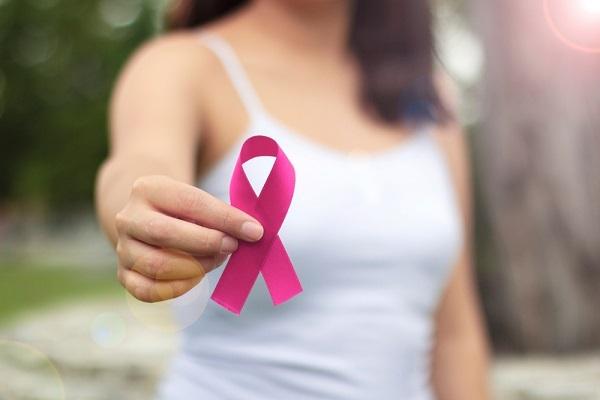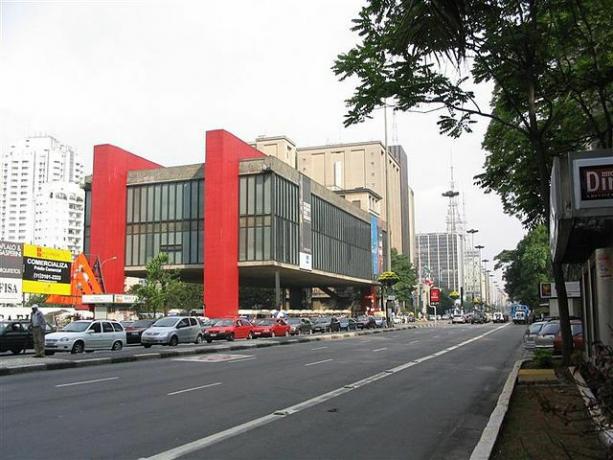On October 1st, the campaign known as Pink October. Created in the early 1990s in the United States, the international movement aims to raise awareness about the importance of an early diagnosis and prevention against breast cancer.
Breast cancer is the type that most affects women worldwide and the most common in Brazil, second only to skin cancer. It is also what causes the most cancer deaths in women.
There is no single cause of getting breast cancer. Several factors are related to it. Although less common, men can get breast cancer too, but this is rare, only 1% of cases.
Already between women, those over 50 years of age are more likely to be affected. The risk of developing the disease increases with age. However, this is not a fixed rule as there are many cases of breast cancer in women before this age group.
Breast cancer at age 24
In 2010, Cláudia Andrade found out that she had breast cancer, at the age of 24. At the time, she had been married for 2 years and detected the lump in her left breast in the bath, through self-examination.
"I had a benign lump at the age of 19, and I've always been on the lookout for this issue ever since. During the shower, I went to do a breast self-exam and felt the lump. I went to the mastologist, who gave me the necessary exams, biopsies, etc., where she found that I really had breast cancer", Cláudia Andrade
During the treatment, Cláudia had a radical mastectomy, that is, she removed the entire breast, skin and nipple. He also did what is called an armpit emptying, removing all the lymph nodes (small structures that act as filters for harmful substances) from the left armpit.
also passed by chemotherapy, she lost all her hair, went through all the processes of side effects that chemo brings, such as: nausea, malaise, low immunity, in addition to conflicts regarding her self-esteem.
Read too: Advances in cancer treatment
But, for her, the worst thing was receiving the sentence that a sequel to the treatment would be her sterility, not being able to have children, Claudia's dream. This is because chemotherapy treatment is not selective, destroying both the bad cells and the good ones.
In Claudia's case, her eggs would be destroyed and as she needed to start the treatment immediately, she didn't have time to do the egg freezing process.
"I had just got married. Didn't have a breast, didn't have hair. I was physically very different. But, not being able to have children, that was very shocking, striking. I knew I needed to fight for life, but knowing that I couldn't generate life was desperate", Cláudia Andrade
Still, devastated by the diagnosis and all the consequences, she underwent the treatment and spent 5 years taking oral medication, after chemotherapy, and trying to have a normal life again.
It was then that Cláudia and her husband decided to start the adoption process, after undergoing tests related to human reproduction, where it was actually found that she could not have children.
Behold, when they began to start the adoption documentation, she discovered her daughter's pregnancy, now 6 years old. Two years later, in 2018, Cláudia's second child was born.
"Eduarda was born in 2016, beautiful and perfect. It was a big miracle for us. And then, God graced us with the arrival of Levi in 2018. One more miracle", Cláudia Andrade
Cancer and metastasis
In 2020, already cured of cancer, Cláudia began to experience a lot of pain in her back. The pain actually had already appeared during her second pregnancy, but she believed it was due to the weight of her belly. As her second child was already 1 year and 4 months old and the pain persisted, she decided to find out the cause.
It was then found that Claudia now had a tumor in her spine and, on further investigation, metastasis to the liver, lung, bones and mediastinal lymph nodes was discovered.
At that time, she had to stop breastfeeding her second child, who was exclusively breastfeeding. Despite having lost a breast due to cancer, Cláudia breastfed both children.
And since then she has been battling cancer again. She has already gone through some lines of treatment, some tumors stabilize, others grow and she is continuing this battle.
Do not stop now... There's more after the publicity ;)
Hope for cancer treatment outside Brazil
Currently, Cláudia and her family are considering undergoing treatment in the USA. She was there recently and got an opening to gain access to Stanford Hospital, a world reference in cancer treatment, through a US government program called MedCall, and your challenge is to go there if deal with.
But for that, she needs financial resources to go with her family. At this point, she needs to undergo a liver biopsy and a molecular test called the Fondatoin Test, and return to the US to begin consultations and future treatment.
The cost is high, so she and her husband set up a crowdfunding online to pay for the treatment.
"I went three months ago, alone. But our hearts are broken. Those were very difficult days. To be without small children, without a husband, without a family, even if it's for life. Our purpose is to take the whole family and the challenge today is to raise funds so that we can go there and stay there for at least two months", Cláudia Andrade
Sacrifice the present in anticipation of an uncertain future
Cláudia says that today, the most difficult thing, in addition to health and finances, is that the treatment requires a lot of dedication. She works hard not to let any part of her Cláudia be abandoned, marriage, maternity, family relationships, since the treatment exists, but it is uncertain.
"You sacrifice a lot of the present in the hope of having a future, but you have to have a lot of wisdom. If you totally sacrifice your present, the future may not even exist. Who knows about the future? Nobody knows! But the dose needs to be very accurate, if I miss the opportunity for treatment today, tomorrow may not exist. So it's a very fine line", Cláudia Andrade
Breast cancer in numbers
According to data from the National Cancer Institute (INCA), for Brazil, 66,280 new cases of the disease were estimated in 2022, with an estimated risk of 61.61 cases per 100,000 women.

The main suspicious signs and symptoms of breast cancer are:
- Lump (nodule), usually hardened, fixed and painless;
- Reddened breast skin or similar to orange peel;
- Changes in the nipple (nipple) and spontaneous discharge of liquid from one of the nipples;
- Small nodules on the neck or under the arms (armpits).
In general, it is common for one of the breasts to be larger than the other or for them to have different shapes. But you need to be alert for a suspicious sign or symptom of breast cancer.
One in three cases of cancer can be cured if it is discovered at an early stage. But many people, out of fear or misinformation, avoid the subject and end up delaying the diagnosis, seeing the disease as a death sentence or an inevitable and incurable evil.
When to have a mammogram?
In addition to being attentive to their own bodies, it is recommended that women undergo a routine examination. Among them is the mammography, which is an X-ray of the breasts, capable of identifying suspicious alterations.
This test may be done routinely (screening) to identify cancer before a woman has symptoms. Women should be informed about the benefits and risks of this practice.
However, it is recommended that women ages 50 to 69 get a mammogram every two years. The exam to evaluate a suspicious alteration in the breast is called a diagnostic mammogram and can be performed at any age, when there is a medical indication.
Before the age of 50, mammography is not highly indicated (except in specific cases), because the breasts are denser and have less fat, which limits the exam and generates many incorrect results.
Is it possible to reduce the risk of breast cancer?
There are some measures that can reduce the chances of having breast cancer, such as maintaining adequate body weight, practicing physical activity and avoiding the consumption of alcoholic beverages. A breast-feeding is also considered a protective factor.
By Erica Caetano
Journalist


